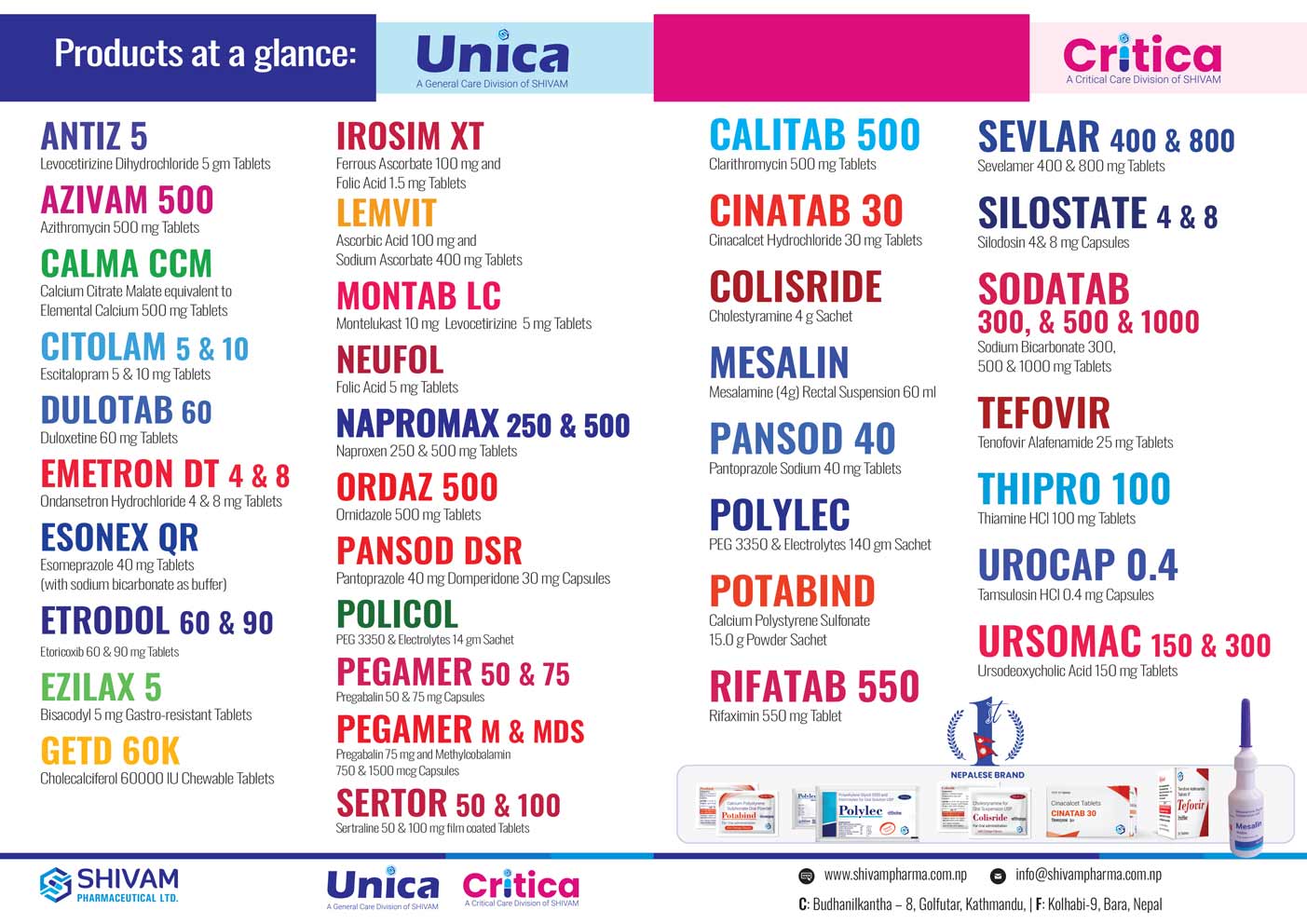Description
PHARMACOLOGICAL PROPERTIES:
Pharmacodynamic properties:
Pharmacodynamic effects
Mesaline is one of the two components of sulphasalazine, the other being sulphapyridine. It is the latter responsible for most of the side effects associated with sulphasalazine therapy, while mesalazine is known to be the active moiety in the treatment of ulcerative colitis.
Mechanism of Action
Activation of the γ-form of peroxisome proliferator-activated receptors (PPAR-γ) and inhibition of nuclear factor-kappa B (NF-κB) in the intestinal mucosa have been implicated. Mesalamine has in-vitro and in-vivo pharmacological effects that inhibit leucocyte chemotaxis, decrease cytokine and leukotriene production and scavenge for free radicals. It is currently unknown which, if any of these mechanisms play a predominant role in the clinical efficacy of mesalamine.
Pharmacokinetic properties:
Absorption
The absorption following rectal administration is low, but depends on the dose, the formulation and the extent of spread. Based on urine recoveries in healthy volunteers under steady-state conditions given a daily dose of 2g (1g x 2), about 15-20% of the dose is absorbed after administration of enemas.
Distribution
Mesalamine and acetyl mesalamine do not cross the blood brain barrier. Protein binding of mesalamine is approximately 50% and of acetyl mesalamine about 80%.
Elimination
The plasma half-life of pure mesalamine is approximately 40 minutes and for acetyl mesalamine approximately 70 minutes. Both substances are excreted in urine and faeces. The urinary excretion consists mainly of acetyl mesalamine.
THERAPEUTIC CLASS: Non-Steroidal Anti Inflammatory Drug
CLINICAL PARTICULARS:
Therapeutic Indication: Ulcerative Colitis
Posology and method of Administration:
Posology:
Adult: The recommended dosage is one enema at bed time.
Method of administration
Rectal:
A visit to the toilet is recommended before administration, see separate instructions for use. Shake the enema container well before use.
This dose is given to patients above 12 years of age.
CONTRAINDICATIONS:
MESALIN is contraindicated in:
– Patients with known hypersensitivity to Mesalamine, salicylates.
– Patients with severe liver and/or renal impairment.
SIDE EFFECTS:
Common Side Effects: Headache, Diarrhoea, Abdominal pain, Nausea
SPECIAL WARNINGS AND PRECAUTIONS FOR USE:
- Caution is recommended when treating patients allergic to Sulphasalazine (risk of allergy to salicylates). Severe cutaneous adverse reactions (SCARs), including Drug reaction with eosinophilia and systemic symptoms (DRESS), Stevens-Johnson syndrome (SJS) and toxic epidermal necrolysis (TEN), have been reported in association with mesalamine treatment. In case of acute symptoms of intolerance, i.e. abdominal cramps, abdominal pain, fever and severe headache, and/or the first appearance of signs and symptoms of severe skin reactions, such as skin rash, mucosal lesions, or any other signs of hypersensitivity, the treatment should be discontinued immediately.
- Caution is recommended in patients with impaired liver function. Liver function parameters like ALT or AST should be assessed prior to and during treatment, at the discretion of the treating physician.
- The drug is not recommended for use in patients with impaired renal function and in patients with haemorrhagic diathesis.
OTHER MEDICINES AND MESALAMINE RECTAL SUSPENSION:
No interaction studies have been performed. Combination therapy with mesalamine and azathioprine, or 6-mercaptopurine, or thioguanine, have shown a higher frequency of myelosuppressive effects, and an interaction cannot be ruled out, however, the mechanism behind the interaction is not established. Regular monitoring of white blood cells is recommended and the dosage regimen of thiopurine should be adjusted accordingly.
There is weak evidence that mesalamine might decrease the anticoagulant effect of warfarin.
PREGNANCY AND BREAST-FEEDING
Pregnant: Mesalamine should not be used during pregnancy and lactation except when the potential benefit of the treatment outweighs the possible hazards in the opinion of the physician. The underlying condition itself (Inflammatory bowel disease (IBD) may increase risks for adverse pregnancy outcome.
Breast-Feeding: Mesalamine is excreted in breast milk. The mesalamine concentration in breast milk is lower than in maternal blood, whereas the metabolite, acetyl mesalamine appears in similar or increased concentrations. No controlled studies with MESALIN during breast-feeding have been carried out. Only limited experience during lactation in women after oral application is available to date. Hypersensitivity reactions like diarrhoea cannot be excluded. If the infant develops diarrhoea, breast-feeding should be discontinued.
DRIVING AND USING MACHINES
MESALIN has no or negligible influence on the ability to drive and/or use machines
OVER DOSE:
There is limited clinical experience with overdose of MESALIN which does not indicate renal or hepatic toxicity. Since MESALIN is an amino salicylate, symptoms of salicylate toxicity may occur.






Reviews
There are no reviews yet.